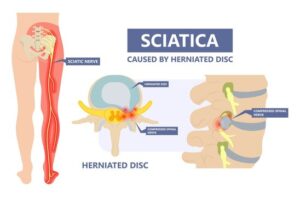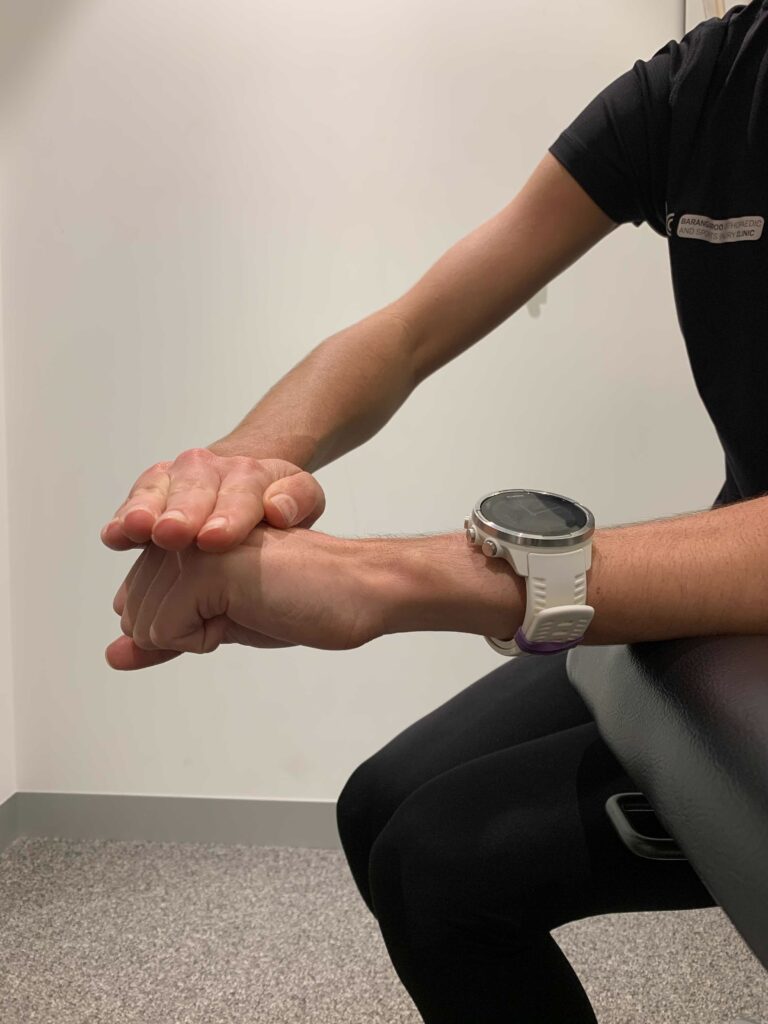What Is The Difference Between Sciatica And Sciatic Nerve Pain?
Many people get diagnosed with sciatic pain but do they know what sciatic pain really is? The words “sciatic pain” and “sciatica” get passed on to many of our patients by health professionals but what do these words mean?
Let’s break it down
The sciatic nerve is the largest spinal nerve in the body. It runs from your lower spine to your toes. This nerve is important, as it helps our lower limb muscles receive signals from the spine, resulting in motor (movement) and sensory (sensation) control of our lower limbs.
Sciatica and sciatic pain/irritation are completely different, however they get mixed up all the time.
 What is sciatica?
What is sciatica?
Sciatica is defined in the medical world as a “radiculopathy”(1,2). This means there is a compression of the nerve root at the spinal cord (1,2). Sciatica effects around 40% of lower back patients, with with up to 40% of adults annually (2). The most common types of nerve root compression we see are herniated discs and disc bulges on scans (2). Common signs/symptoms include: radiating pain down the affected limb or limbs, pins and needles, burning sensation, electric sensation or numbness (1,2).
What is sciatic nerve pain?
Sciatic nerve pain is an umbrella term used for pain that is associated with lower back and/or lower limb pain (3). The two most common being piriformis muscle syndrome and sacroiliac joint pain. These are often mistaken for sciatica because the symptoms can feel similar however, they do not last as long and are usually not associated with a burning sensation. Piriformis pain is the most common with around 6% of people diagnosed with lower back pain having piriformis syndrome (3). The reason that piriformis pain is often mistaken as sciatica is because in 15-30% of people the sciatic nerve actually passes through the piriformis muscle (3). The nerve can then become compressed as it exits the greater sciatic notch in the glutes causing pain down the leg that can even reach the knee (2,3).
“The reason that piriformis pain is often mistaken as sciatica is because in 15-30% of people the sciatic nerve actually passes through the piriformis muscle.”
If you experience any of the above, the treatment that is highly suggested is a combination of physiotherapy and medical (doctor) treatment. The physiotherapist will work with your doctor to help in your recovery. If you have been experiencing ongoing pain in your back that travels down your leg(s), it may be time to visit a physiotherapist. Book in for an appointment HERE.
By Physiotherapist, Paulina Backiel
References
1.Saleem M, Iftikhar S, Javaid R, Rana T, Rana M, Arfat Y. Sciatica: Medical treatment or Physiotherapy?. African Journal of Pharmacy and Pharmacology. 2019 Aug 31;13(14):203-12.
2.Anikwe EE, Tella BA, Aiyegbusi AI, Chukwu SC. Influence of Nerve Flossing Technique on acute sciatica and hip range of motion. International Journal of Medicine and Biomedical Research. 2015;4(2):91-9.
3.Gondal MJ, Iqbal MA, Nasir RH, Tabasssum R, Rasul A. Study of treatment outcome of piriformis syndrome with and without physiotherapy treatment. Annals of King Edward Medical University. 2015;21(2):78.
4.PHOTO
https://t3.ftcdn.net/jpg/03/90/14/38/360_F_390143883_DXJPW1m0KAZs9YKezV8nOoVc2KnqaPbd.jpg


